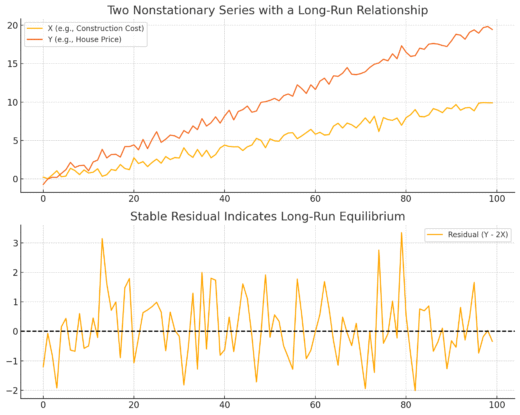Category: Academic Concepts
Method Main Use Case Assumptions Handles Time-Invariant Variables Endogeneity Control When to Use Pooled OLS Treats panel data as pure cross-sectional data Assumes no unobserved heterogeneity (all units are identical aside from included variables)...
One should use Generalized Method of Moments (GMM) when: 1. Endogeneity is present GMM is commonly used to address endogeneity, especially when: 2. Model has more moment conditions than parameters GMM allows estimation even...
An instrumental variable (IV) is a tool used in regression analysis to solve the problem of endogeneity — when an explanatory variable is correlated with the error term. A good instrument must satisfy two...
Endogeneity refers to a situation in which an explanatory variable is correlated with the error term in a regression model. This violates a key assumption of classical linear regression and leads to biased and...
“Long-run equilibrium” in the context of cointegration means: Even though individual time series (e.g., prices, GDP, exchange rates) may drift or trend over time, a certain linear combination of them remains stable over the...
Robust regression refers to methods that are less sensitive to outliers, heteroskedasticity, and violations of normality of residuals. These techniques aim to produce reliable estimates even when assumptions like homoskedasticity or normal error distribution...
When the dependent variable in a linear regression is not normally distributed, it can violate key assumptions, particularly those affecting inference (like p-values and confidence intervals). Here are remedies depending on the severity and...
Power analysis in regression helps you determine whether your sample size is large enough to detect an effect of a certain size with a given level of confidence. It’s essential when planning studies to...
In regression analysis, effect size refers to the strength or practical importance of the relationship between the predictor(s) and the outcome variable. Unlike t-tests, regression effect sizes focus on how much variance is explained...
In SPSS and statistics more broadly, effect size in the context of a t-test measures the magnitude of the difference between two groups, independent of sample size. While a t-test tells you whether the...



